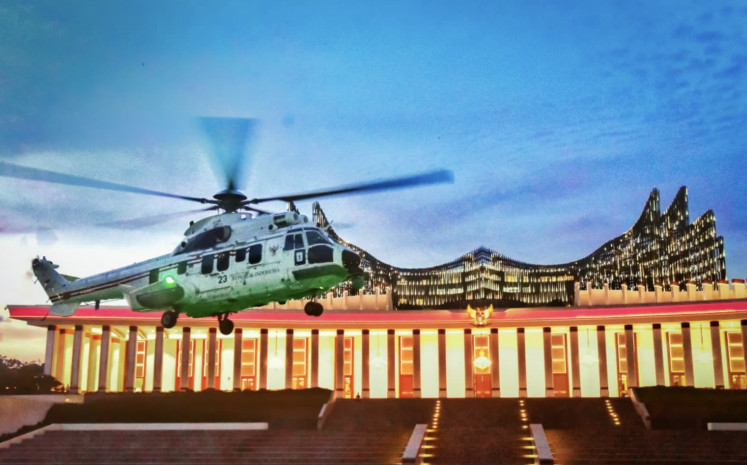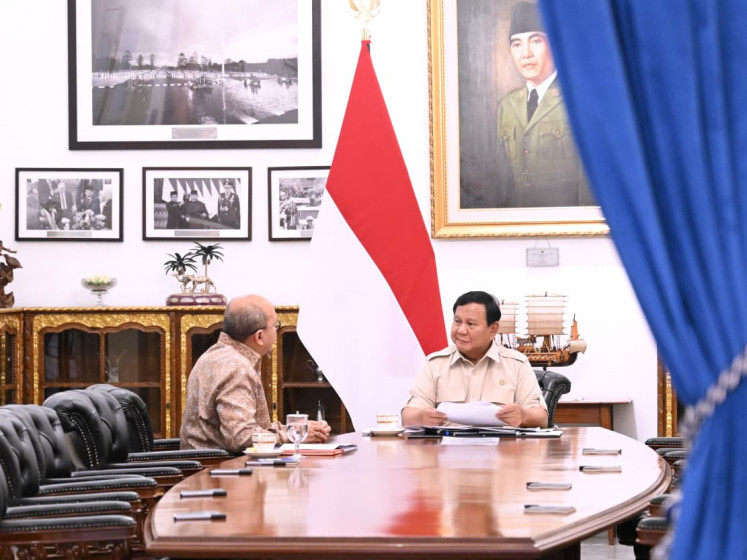Popular Reads
Top Results
Can't find what you're looking for?
View all search resultsPopular Reads
Top Results
Can't find what you're looking for?
View all search resultsGovt to build new airport in to ease load on Soekarno-Hatta
The government plans to build a new airport in West Java in 2013 to anticipate a surge in passenger numbers at Soekarno-Hatta International Airport in Banten over the next few years, an official says
Change text size
Gift Premium Articles
to Anyone
T
he government plans to build a new airport in West Java in 2013 to anticipate a surge in passenger numbers at Soekarno-Hatta International Airport in Banten over the next few years, an official says.
Transportation Ministry spokesman Bambang S. Ervan said on Sunday that the development
of the airport, to be located around Cikarang and Karawang, West Java, was necessary as the expansion of Soekarno-Hatta’s terminals could not be supported by the construction of a third runway, due to lack of space.
Currently, the airport has three terminals with a total combined capacity for 22 million passengers, while the number of passengers passing through the airport has exceeded 30 million over the past year.
During the first eight months of this year, the airport served 11.44 million passengers on domestic flights and 3.62 million passengers on international flights, according to Central Statistics Agency data.
Soekarno-Hatta’s two runways are 3,600-meters and 3,660-meters long, and can accommodate 52 flights per hour.
“Currently, we are conducting a feasibility study to determine the possibility of developing multi-airports, which is expected to be completed at the end of this year or early next year,” Bambang told The Jakarta Post in a telephone interview.
He added that the government was still calculating the investment needed for the project and assessing whether to offer private firms some involvement via a public-private partnership (PPP) scheme, or to directly appoint state airport operator PT Angkasa Pura II through a presidential regulation.
“The new airport will significantly help Soekarno-Hatta cope with the number of passengers, which rise by 15 percent to 18 percent every year,” he said.
Bambang added the proposed airport would be integrated with the planned Cilamaya international seaport in Karawang.
There are presently three other airports in the Greater Jakarta area: Halim Perdanakusumah International Airport in East Jakarta, which is also an Air Force Base, and which caters for general and charter flights; Pondok Cabe in Ciputat, South Tangerang, which operates charter flights; and Budiarto in Curug, Tangerang, which houses flying schools.
Besides the planned airport in Karawang, the government also plans to build the Kertajati international airport in Majalengka, West Java, to serve domestic and international flights, as well as cargo flights, replacing the Hussein Sastranegara International Airport in West Java’s provincial capital of Bandung.
Bambang added the government would also build a railway system to support access to Soekarno-Hatta International Airport.
Transportation to the airport would utilize commuter-line trains from Manggarai, East Jakarta, to Soekarto-Hatta via Tangerang, and express trains connecting Jakarta to the airport via Pluit in the north of the city.
“The railway for the commuter line will be constructed at the end of 2013 or early 2014,” he said, adding that the express railway design was still under review by state infrastructure fund PT Sarana Multi Infrastruktur and was yet to be scheduled for construction.
Recently, President Susilo Bambang Yudhoyono revealed that starting from next year, the government would build 14 new airports in various locations across the country, as well as rejuvenate 116 airports.
In line with that, the government also plans to develop a new railway system of 150 kilometers in length to enhance urban and regional accessiblity, and balance infrastructure development across the archipelago.
Economists have said that the development of physical infrastructure is urgently needed to support Southeast Asia’s largest economy, which has grown more than 6 percent annually over the past two years.










